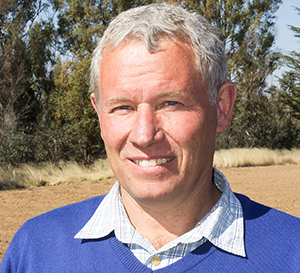
Robert Lindeque, wheat breeder at the ARC
Small Grain Institute in Bethlehem.
Photo: Supplied
“Wheat quality, specifically grain protein, is of the most crucial components determining the profitability of wheat farmers.”
This is according to Robbie Lindeque, wheat breeder at the ARC Small Grain Institute in Bethlehem. As a wheat breeder, one of his primary aims is to make a contribution to sustainable wheat production in the inland of South Africa.
A closer analysis of bread wheat protein
With his PHD thesis, "Protein quality versus quantity in South African commercial bread wheat cultivars”, Lindeque answered critical questions regarding the South African wheat industry. The major question of his PhD, which he received on 30 June 2016, was whether protein quality could compensate for protein quantity as a measure of bread quality in South Africa.
The three main wheat-producing areas in South Africa, the dryland summer rainfall region (Free State), dryland winter rainfall region (Western Cape), and the cooler irrigation regions (Northern Cape), were used as a starting point for the study.
Proteins are essential for the baking of good quality bread. Worldwide, the utilisation of wheat flour shipments in the baking industry is determined by the protein proportion of the shipment.
Lindeque says the aim of his thesis was to determine whether a closer analysis of bread wheat protein would provide a better indication of good or bad bread quality. “The conclusion from this study was that both protein quantity and protein quality from all three production areas in South Africa varies constantly in accuracy regarding the estimation of bread volume, mainly as a result of environmental factors,” says Lindeque.
Results relevant to the wheat industry
In 2012, application was made to the Winter Cereal Trust for funding of the project. After funding was approved – thus making the Winter Cereal Trust the main partner – seed samples were collected from the 2012 and 2013 national cultivar adaptation trials.
“After this, the seed underwent protein and flour analyses, which added a third year to the study, with the fourth year consisting of statistical processing and documenting of the results,” says Lindeque.
Funding by the Winter Cereals Trust contributed to the fact that the study constantly attempted to keep issues and results as relevant as possible to the wheat industry.